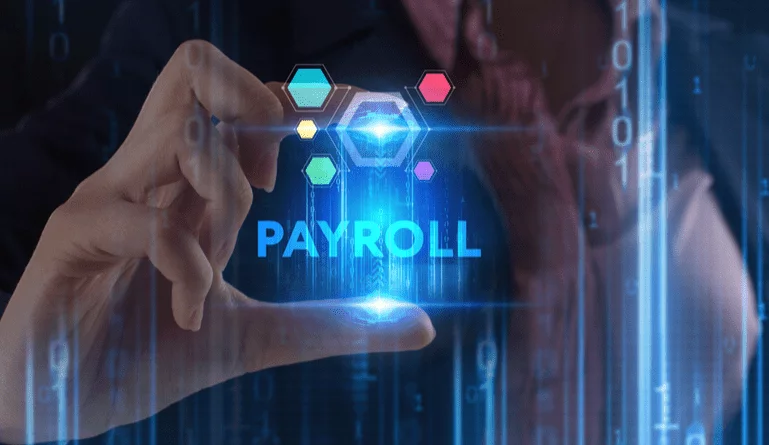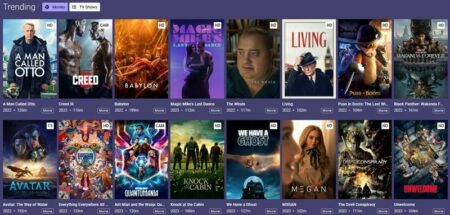Businesses in the UK are constantly searching for methods to improve productivity and simplify processes in the ever-changing payroll and tax landscape. Many businesses are discussing a significant change in which they should integrate employee benefits directly into payroll instead of using the traditional P11D forms.
This modification can improve accuracy, reduce administrative expenses, and boost worker satisfaction. Here’s how UK businesses may transition smoothly and easily.
Key Takeaways
- Instead of using P11D forms for employee benefits, UK firms are integrating them directly into payroll to save administrative expenses and increase accuracy.
- The P11D form records costs and benefits that are not paid on payroll. Sometimes, employees’ tax responsibilities are delayed.
- Payroll advantages include fewer administrative tasks, real-time taxation, improved employee satisfaction, and cash flow management.
- Benefits evaluation, HMRC notification, payroll system adjustments, employee communication, policy changes, and ongoing monitoring and review are all required for the switchover.
- Complex setup, continuing management, employee interactions, software needs, issues, HMRC registration, and compliance.
- Ensure that programs are implemented, staff are trained, and reports are accurate.
- PSAs expedite P11D reporting, hence minimizing administrative complexity and compliance risk, for little, inconsistent, or unworkable benefits.
What is P11D?
A P11D form is an HMRC document that an employer uses to annually record particular costs and benefits paid or made available to directors and employees.
Its purpose is to furnish HMRC with information regarding specific taxable benefits in kind that either cannot be included in the payroll or that the employer has chosen not to do so, making them subject to PAYE and NIC deductions over a year.
P11D in UK payroll: what is it?
P11D is an acronym for the following in UK payroll: Employers must record taxable benefits that are made available to employees on a P11D HMRC form if they haven’t previously been paid into the payroll. Additionally, it provides an employer with the opportunity to record and return any employer-paid National Insurance
Contributions for non-payroll benefits.
Recognizing P11D and Its Challenges
The P11D form was used in the past to record benefits and costs that employees received but weren’t paid for by PAYE (Pay As You Earn). While it meets a need, the P11D procedure can be laborious and time-consuming since it necessitates extensive reporting and additional paperwork. Moreover, employees typically have delayed tax responsibilities as a result of benefit taxes being paid beyond the end of the tax year.
The Advantages of adding benefits to payroll
The following are some advantages of Payroll Benefits in Kind (PBIK), or integrating benefits into payroll:
- Benefits integrated into the payroll system ease the administrative process by eliminating the requirement for separate P11D filings.
- Employees’ benefits are taxed in real-time through their monthly payroll, resulting in more accurate and timely tax payments.
- Improved Worker Experience: Workers are more aware of their whole compensation package and can observe how their perks directly affect their income.
- Businesses can better manage their cash flow by distributing benefit costs over the year.
Techniques for Payroll Benefits Inclusion
Transitioning from P11D to payroll integration of benefits necessitates many critical steps:
- Examine all of the perks that are now offered to employees to see which ones you can afford. Health insurance, gym memberships, and company cars are typical perks that can be merged.
- Inform HMRC. Notify HM Revenue and Customs (HMRC) ahead of time of your desire for payroll benefits. You can use the government’s online PAYE system for this.
- Update Payroll Systems: Verify that the benefits-in-kind handling feature of your payroll program is operational. Although it may take to speak with your software provider, the majority of the existing payroll systems can be modified to offer these advantages.
- Employee Communication: Clearly explain the changes to your staff, including how they will impact their income and taxes. Give them detailed instructions on how their monthly payslips will display benefits.
- Modify Policies and Processes: Align your internal policies and processes with the recently implemented payroll method. This involves making sure your payroll team is trained and knowledgeable about the new system.
- Keep an eye on and investigate: Check that the integration process is operating well regularly. Keep an eye on any feedback from staff members and adjust the system as appropriate.
What challenges exist?
- First, configuration and intricacy: It can be difficult to set up the system and requires a thorough knowledge of benefits and payroll laws. It’s critical to have a competent payroll partner.
- The number of P11D forms is decreasing, but accurate records still need to be kept, and benefits still need to be properly taxed.
- The changes must be well communicated to staff workers, who may not be aware of how payrolling affects their taxes and paystubs. We can assist with staff message drafting for smooth implementation.
- Software Requirement: There’s a requirement for enough payroll systems, which may mean spending more on upgrades or acquisitions. Your business will be able to reduce those costs by outsourcing.
- Errors can happen with any payroll system, especially in the first phase of the transition.
- Employees may require training to understand how difficult it is to add benefits to payroll. Another reason is to delegate your payroll to someone knowledgeable about those intricacies.
- For payroll benefits, businesses must register with HM Revenue & Customs (HMRC) and ensure ongoing adherence to their regulations.
Overcoming Potential Challenges
While there are certain benefits to the integration process, there are drawbacks as well, especially if:
- Make sure your payroll system supports payrolling benefits. If not, you might need to purchase new software or get assistance from your provider.
- Employee Understanding: Some employees may first find it challenging to understand the changes. Effective communication and education are the two main components of a smooth transfer.
- In the payroll system, every benefit should be accurately documented to avoid discrepancies and any HMRC issues.
What benefits does payrolling offer?
Taxation can be made more efficient by directly adding the monetary equivalent of non-salary benefits to the employee’s payroll. This streamlines the administrative procedure and ensures transparency and efficiency in the taxation of these benefits. Thus, there is no longer a need for end-of-year adjustments since payroll includes real-time tax benefits like company cars, health insurance, gym memberships, and cell phone plans!
What do these developments signify for businesses?
For businesses, this will signal a big change. By April 2026, benefits documentation on P11D forms will no longer be required. As a result, businesses will need to ensure that their payroll system can handle adding benefits right now. As a result, employers would need to use PAYE payroll software that has been authorized by FORRC for payroll benefits. This requires employers to take a proactive approach to updating and improving their systems.
About P11D Forms
The P11D procedure uses two forms to record taxable benefits and expenses:
- P11D forms are filled out by each employee to document the perks and costs paid by the employer. They also allow HMRC to change the employee’s PAYE code to collect taxes continually. Employees who are required to file a self-assessment tax return must include the information from the P11D.
- The employer’s statement, P11D(b), confirms all reported taxable costs and benefits through P11D forms or payroll, therefore showing the entire amount of Class 1A NICs owed.
Things like company vehicles and vans, interest-free or low-interest loans, living accommodations, non-business costs, and private health insurance are frequently included on P11Ds.
The P11D and P11D(b) form date is July 6, which is after the tax year ends. Therefore, for the 2023–2024 tax year, the deadline is July 6, 2024. Missing the deadline may result in heavy fines for businesses, with up to £300 in penalties per form and £100 monthly for every 50 employees. The resulting Class 1A NIC is due by July 19 (or July 22 if paying online), and any late payments will incur interest.
Agreements for PAYE settlements (personal income tax)
A PSA is a contract that permits employers to pay employee taxes on benefits and expenses. Companies can pay all of their tax and national insurance (NIC) obligations to HMRC with a single yearly payment. For each benefit to be individually eligible for PSA therapy, it must be insignificant, intermittent, or unfeasible.
- Minor gifts or vouchers, staff incentive rewards, phone bills, staff discount schemes, etc.
- Irregular: ad hoc or one-time costs, including employee relocation costs or long-service awards that are not excluded.
- Unfeasible costs exist, hard to divide among employees, including staff entertainment or working lunches.
PSAs provide businesses with a less complicated option for the challenging P11D reporting procedure. In addition to reducing the administrative burden associated with P11D filings, PSAs help businesses meet their compliance requirements more efficiently and pay taxes that would otherwise be the employee’s responsibility. Benefits that employers would want to continue offering to employees “free of tax”—like incentive vouchers or social events—can be managed through a PSA.
PSAs are an inventive way to reduce administrative and regulatory risk, even though they can be costly. Since the employee benefits from having their taxes paid, the tax due on the specified outlay or benefit in kind is “grossed up.”
Further Details Regarding the Transition to Payroll Benefits
Case Studies: Achievements
Tech Innovations Ltd., a medium-sized technology firm, made the transition to payrolling benefits two years ago. The HR Director, Sarah Thompson, reported a noticeable increase in employee satisfaction and a 30% decrease in administrative burden as a result of more accessible payslips.
Greenfields Consulting: A small consulting firm with fifty employees last year paid benefits into their salary. The CEO, Mark Evans, emphasized that easier planning and improved cash flow management were the main advantages.
Particular Staff Communications
Effective staff communication is essential to ensuring a smooth transition:
- Organize seminars or webinars to discuss the changes and how they will benefit personnel.
- Provide comprehensive answers to frequently asked questions about the switchover, along with further resources.
- Employees with specific problems or intricate benefit plans will benefit directly from one-on-one discussions.
Utilizing technology to provide seamless integration
The following contemporary payroll systems greatly facilitate the integration of benefits into payroll:
- Ensure that your program can calculate benefits automatically and apply the appropriate tax codes.
- Choose a tool that enables you to create bespoke paystubs with ease, displaying the breakdown of income, benefits, and taxes.
- Make use of technologies that ensure transparency and accuracy by providing managers and employees with real-time information.
Factors Relating to Law and Compliance
Respecting HMRC regulations is essential.
- Regular internal audits contribute to correct benefit taxation and reporting.
- Keep abreast of any modifications to tax legislation that may have an impact on benefit reporting.
- Consult experts: Consult consultants or tax specialists to ensure full compliance and receive advice on best practices.
Prospective Advancements in Payroll Administration
The methods used to administer payroll will evolve with technology. Observable trends include:
- The use of artificial intelligence and machine learning will continue to make payroll processes simpler.
- Blockchain: The potential for using blockchain technology to improve the security and transparency of payroll transactions.
- Portals for employee self-service: solutions that let employees manage their payroll and benefits data on their own are becoming more and more popular.
Conclusion
Including benefits in payroll instead of using traditional P11D forms would boost accuracy, streamline administrative work, and enhance employee satisfaction overall. Although there are several challenges associated with the move, firms may manage it well if they plan, communicate well, and use modern payroll systems. Further technological advancements that would offer even more efficiency and transparency appear to be in store for payroll administration in the future.
FAQs
1. What is the P11D form?
Employers use P11D forms to track the benefits and expenses they pay to employees but do not include them in payroll.
2. How can payroll assistance with employee benefits be provided?
Better cash flow management, real-time taxes, simplified administration, and improved employee satisfaction are a few of the benefits.
3. How does one go about incorporating benefits?
A few crucial steps are assessing current benefits, getting in touch with HMRC, modifying payroll systems, communicating with employees, adjusting policies, and conducting ongoing monitoring and evaluation.
4. What challenges can businesses face as they implement the change?
Among the challenges are those related to initial setup, ongoing administration, staff communication, software requirements, error-proneness, and HMRC compliance.
5. How can businesses get over these challenges?
Companies may overcome challenges by ensuring software compatibility, maintaining accurate reporting, and providing comprehensive staff education and communication.
6. What are payable settlement agreements, or PSAs?
PSAs make it easier to comply with the law and reduce the amount of work that needs to be done. They do this by letting employers pay their tax and NIC obligations for small, irregular, or impractical benefits all at once every year.
7. What upcoming advancements in payroll management should businesses be aware of?
Future developments might include more use of employee self-service portals, increased automation, and artificial intelligence, and the potential use of blockchain technology for transparency and security.
Also read: 20 Best Paylocity Alternatives To Use For Payroll and HR Services






